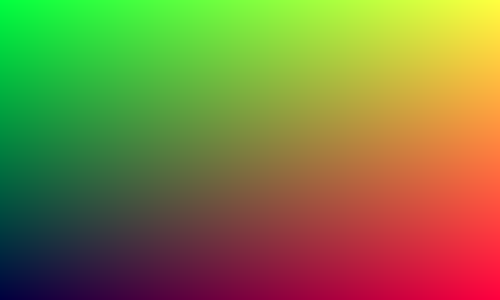
Recently, I started reading a book called The Graphics Codex, it's an amazing book about Computer Graphics covering a lot of content and I find it quite resourceful. I wanted to build my own toy raytracer for the sake of exploring, so that's why I started to refresh my graphics coding knowledge a bit.
Just like any graphics renderer, in order to view your image. you must be able to write your image to a file, right?
Below, I wrote a really simple code to generate the entire RGB colored spectrum from top to bottom:
#include <iostream>
using namespace std;
int main() {
const int width = 800;
const int height = 800;
std::cout << "P3\n" << width << " " << height << "\n255\n";
for(int j=height-1; j>=0; j--) {
for(int i=0; i<width; i++) {
auto r = double(i) / (width-1);
auto g = double(j) / (height-1);
auto b = 0.25;
int ir = static_cast<int>(255.999 * r);
int ig = static_cast<int>(255.999 * g);
int ib = static_cast<int>(255.999 * b);
std::cout << ir << " " << ig << " " << ib << "\n";
}
}
}
You can generate it by simply creating an executable like this:
g++ -o pixels pixels.cpp
Now, when you execute it by typing ./pixels, you'll get a list of numbers that's pretty much a combination and permutation of RGB color values.
Lastly, to generate a colored image, like the one above, just redirect the output to an image format, in this example, I used PPM image format:
./pixels > image.ppm && xdg-open image.ppm
And that's it, you have generated your own colored image! 😁
Hope you found this useful!
